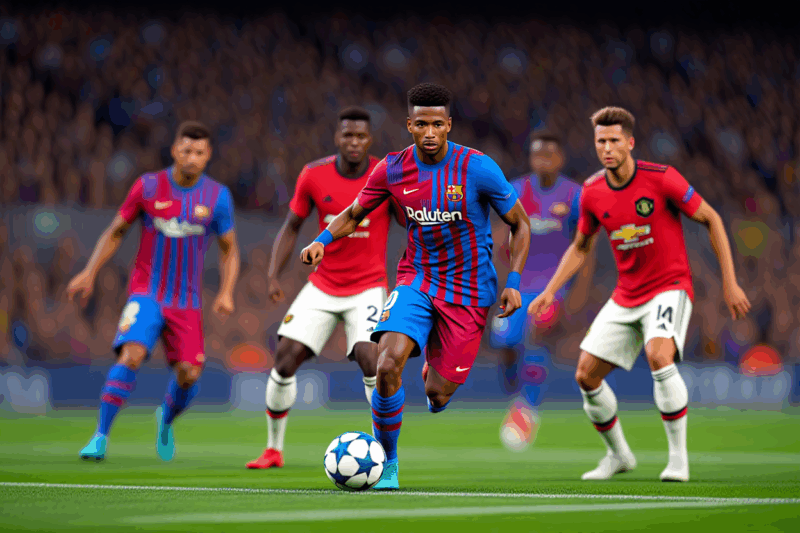The line between gaming and betting has grown increasingly blurred. Football fans who once relied purely on statistics, news, and gut feelings are now turning to an unexpected ally: FIFA and other football simulation games. What began as a way to relax and replicate matches for fun is evolving into a methodical tool to forecast outcomes and make smarter bets.
With resources like the PA lottery bonus code available, more punters are combining traditional betting insights with innovative gaming simulations to refine their strategies not just using betting sites but also casino sites offering betting sections.. But how can a video game realistically inform betting strategies in the real world? The answer lies in the accuracy of today’s simulations, the ability to update squads to mirror real-life rosters, and the creativity of punters who use these platforms to replicate actual match conditions.
Why FIFA and Football Simulations Matter
FIFA (and similar titles like eFootball) is no longer just entertainment. With its official licensing agreements, player databases, and realistic gameplay mechanics, FIFA is built to mirror the footballing world as closely as possible. Player ratings are updated regularly, tactics are modeled on real-life strategies, and even team morale factors can influence how matches play out.
This realism means that when you simulate matches correctly, you’re essentially running a virtual prediction model. The more accurate your input—team rosters, lineups, formations—the closer the simulation can get to replicating how the real match might unfold.
Setting Up Simulations for Betting Purposes
If you want to use FIFA to sharpen your betting edge, you can’t just press “quick match” and hope for accurate results. You need to set everything up properly to ensure the simulation reflects reality as closely as possible. Here’s how:
1. Update Teams and Rosters Regularly
- Always check if your game is updated to the latest version. FIFA releases regular squad updates that adjust player ratings, transfers, injuries, and form.
- If official updates are not available (for example, during the off-season or before a patch is released), you can manually edit squads to reflect real-life situations: injuries, suspensions, or new transfers.
- Without updated rosters, your simulation is outdated and less valuable.
2. Use Real-Life Lineups
- Before simulating, research the expected lineups from trusted sources such as sports news outlets, club announcements, or team press conferences.
- Input the exact formations and tactics expected for that match day. For example, if Real Madrid is predicted to play with a 4-3-3 and Vinícius Jr. out injured, replicate that scenario.
- Even small details like bench depth matter, since substitutions can influence late-game outcomes.
Related: This Has Got To Be Arsenal’s Year –Man United Legend
3. Match Conditions and Settings
- Adjust match settings to mirror the competition format: Champions League, La Liga, or domestic cups. Some teams perform differently in knockout formats compared to leagues.
- Set the match length to realistic halves (e.g., 6-10 minutes each) to allow enough in-game time for tactical nuances to play out.
- Choose neutral stadiums or replicate the actual home advantage when appropriate, since FIFA integrates crowd pressure and home energy into gameplay.
4. Run Multiple Simulations
- One match is not enough. Football is unpredictable, and FIFA is no different. Run the simulation at least 10 to 20 times to identify patterns.
- Track how often each team wins, how many goals are scored, and who the main scorers are. This data can highlight probabilities and help you compare them with bookmaker odds.
How to Interpret Results
A simulation doesn’t guarantee accuracy—it gives you probabilities and tendencies. The key is to interpret outcomes in a structured way.
- If Barcelona beats Sevilla 14 out of 20 simulations with an average margin of two goals, that suggests a strong chance of victory. You can compare this with bookmaker odds to see if there’s value.
- If simulations consistently show a low-scoring game, that could be a cue to explore markets like under 2.5 goals or both teams not to score.
- Noticing a specific player scoring repeatedly in simulations may hint at value in goalscorer bets.
Why This Method Works
The strength of FIFA as a predictive tool lies in its player database and physics engine. Ratings like finishing, composure, stamina, and pace are not arbitrary—they’re designed based on real-world data and scouting reports. When combined with AI that adapts tactics dynamically, the results can often mirror reality closely.
In fact, many fans have noticed uncanny parallels between FIFA simulations and real-world outcomes. While not infallible, the law of large numbers (running multiple simulations) makes this approach increasingly reliable.
Tips for Maximizing Accuracy
To ensure your simulation-based predictions carry real value, consider these final tips:
- Combine Simulation with Data
Don’t rely solely on FIFA. Cross-check with injury reports, xG stats, and form guides. Think of simulations as an additional layer of insight, not the only one. - Adjust for Randomness
Remember: upsets happen in real football, and FIFA can’t always replicate psychological or external factors (like weather, referee decisions, or player motivation). Always leave room for uncertainty. - Stay Disciplined with Bankroll
Even with accurate simulations, betting is never guaranteed. Use simulations to find value markets, not to chase high-risk bets.
Beyond FIFA: Other Tools and Approaches
While FIFA is the most popular platform, alternatives like Football Manager or Pro Evolution Soccer (now eFootball) also offer simulation options. Football Manager, for instance, focuses deeply on tactics and player development, which can offer more detailed scenario planning.
Some advanced punters even combine FIFA results with statistical models or machine learning algorithms to refine predictions. For casual fans, however, FIFA provides an accessible and engaging entry point.
Simulating matches in FIFA or similar games won’t replace traditional betting research, but it can add a unique, interactive layer of analysis. By keeping teams updated, replicating tactics, and running multiple simulations, bettors can gain insights into likely outcomes that raw statistics might overlook.
In a world where every edge matters, FIFA simulations transform gaming into a predictive experiment—bridging the gap between entertainment and analysis. For the smart bettor, that can mean turning hours on the console into smarter wagers and potentially better returns.








